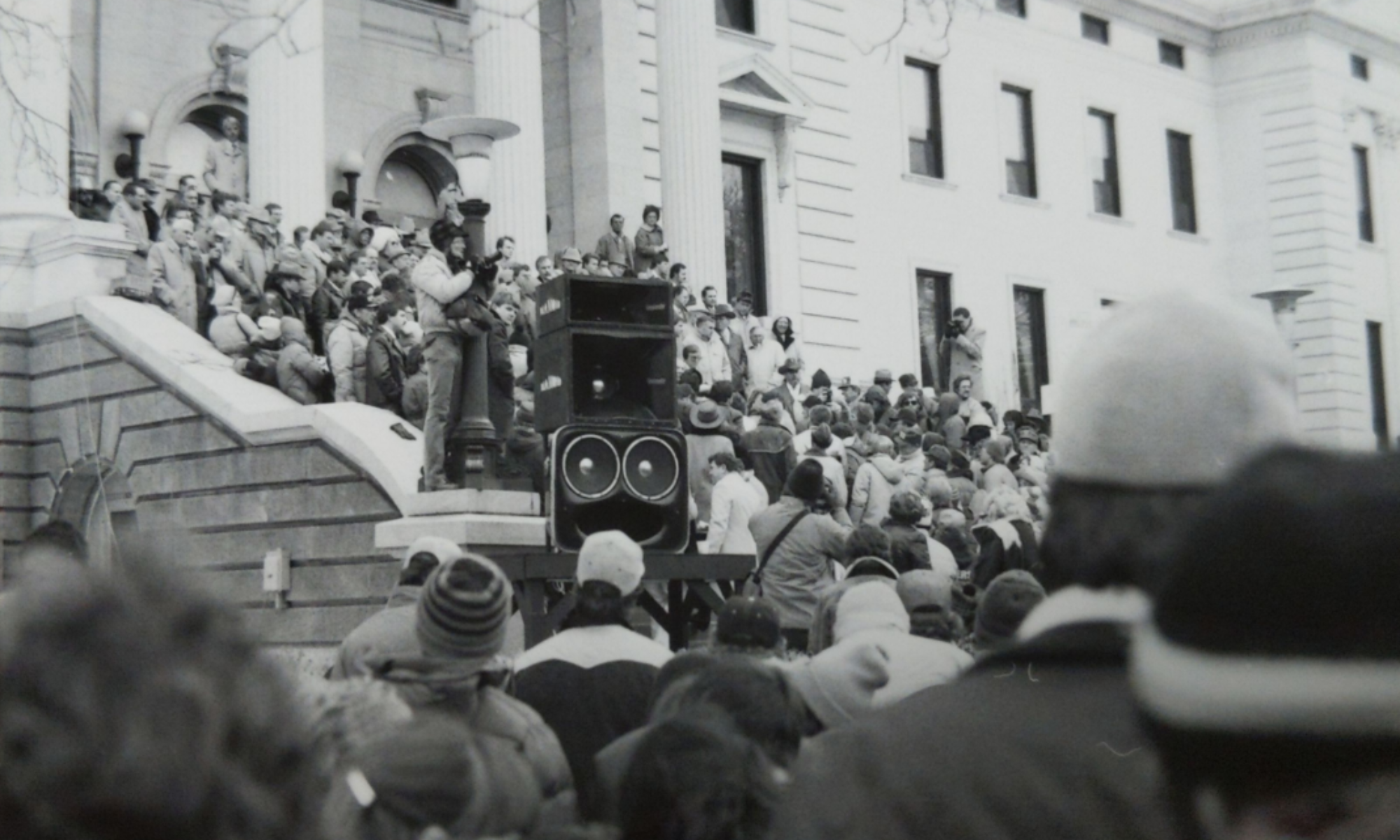On Tuesday, September 29 Marquette hosted what organizers Janice Welburn and James Marten promised was the second of many annual Digital Scholarship Symposiums. Held in the Beaumier Suites in the basement of the Raynor Memorial Library, the interdisciplinary sessions both charted a promising future for digital scholarship and highlighted the ways in which current Marquette researchers, both faculty and students, continue to use DH in research and the classroom.
University of Virginia Research Associate Professor of Digital Humanities Bethany Nowviskie gave the first keynote address, entitled “Alternate Futures, Visible Pasts.” Dr. Nowviskie highlighted the need for digital humanists and archivists to “design platforms that break the fatalism in historical archives” and position them not as statements of what was, but what can be. Using the concepts of “time’s arrow,” “time’s accountant,” and “the Anthropocene,” she indicted the modern archive for creating and sustaining “projects of retrospect, rather than projects of prospect.” Those projects of prospect, she reasoned, would help sustain movements like “Afro-Futurism,” wherein the greatest example of agency for communities like African-Americans (especially in the context of modern protest movements) are the ability to create an individual philosophical infrastructure.
Following Nowviskie, George Mason Director of Public Projects at the Center for History and New Media and Associate Professor in the History and Art History Department Sharon Leon presented a second keynote address on “Reading Between the Lines: Inquiry-Driven Digital Scholarly Infrastructure.” Opening with a survey of digital collections focusing on the various protests of police shootings across cities like Baltimore and Cleveland, Dr. Leon called attention to her own work on the the September 11 Digital Archive. Using both the September 11 project and her own work with Omeka, Dr. Leon argued for recognition of digital tool-making as academic scholarship, because she and others were “building the platform by which others do scholarship.”
Challenging Ed Ayers’ 2013 assertion that digital scholarship “must do the work we have long expected scholarship to do: contribute, in a meaningful and enduring way, to an identifiable collective and cumulative enterprise.” Building on her discussion of Omeka, Dr. Leon asserted that this attitude was part of a “reinforcing cycle”: Scholars, instead, need to change their conception of what counts as scholarship. Instead, of merely tracing footnotes or replicating research, she argued, scholars need to come to accept “non-narrative interpretive forms” of scholarship as an “equivalent piece of material.”
Returning to Omeka, Dr. Leon noted the importance of Linked Open Data in changing the way scholarship was done. Using the example of “Subject -> Predicate -> Object,” she related how, in visualizations of slavery relationships at Georgetown, she constructed vocabularies of “Francis Nease -> Relationship:EmployerOf -> Priscilla Queen” to map in 2D space the complex social structures of plantations. The “next step” in breaking the reinforcing cycle, Dr. Leon added, was creating platforms like Omeka S which could help adding “modifiers” (prepositions, start/end dates, etc.) which would add chronological and geographical depth and breadth to the 2D model.
A faculty roundtable in which various Marquette scholars shared “Tools and Technologies for Digital Scholarship” followed. Dr. Beth Godbee highlighted the ways in which undergraduate English classes encourage adaptations in digital rhetoric. James Brust of the Wakerly Media Lab highlighted the possibilities of collaboration between humanities and the world of communications, and Elizabeth Gibes of the Digital Scholarship Lab (where I am currently embedded as an intern) noted a number of the different digital tools for the classroom like Tableau and ThingLink. Finally, Dr. James Marten and his interns presented their work on the Near West Side project, which has traced the cultural history of the neighborhood around and west of Marquette, which has incorporated a narrative style to highlighting the lives of various residents of Milwaukee in the early 1930s.
Following a panel including Drs. Nowviskie and Leon, there are a number of important takeaway points for scholars wishing to “do” digital scholarship and universities wishing to support it. On the institutional side, if universities wish to attract young scholars, their faculty will need to abandon the “reticence to do the work to learn how to evaluate the scholarship.” Similarly, digital scholars will need to learn to negotiate when they come into a department what kind of research they are expected to put out, as well as what counts. While institutions need to understand, as Dr. Leon noted, that they merely “can’t put [digital scholarship] on top” of existing research and development, especially for young scholars, those scholars also need to know that they are not learning a technology, but learning how to produce things for that technology.
To be sure, there are potential points of frustration with future generations of digital scholars. Dr. Nowviskie’s sometimes-flippant remarks about the challenges associated with archival research appear either not to appreciate the amount of training and thought put into archival collections or flagrantly disregard the vital need for responsible archivists. Given that staff of the Marquette University Archives were in attendance, the remarks were likely poorly received by some. Digital scholarship must continue to embrace a working relationship with the archive–hardly static, always evolving and changing–as a means of promoting the highest levels of research. To dismiss where scholarship has been merely to embrace the digital would be foolhardy; discussions of how to preserve and embrace the agency of marginalized communities should not reject the archive out of hand. Such characterizations serve not only to further divide the scholarly community but limit historians’ ability to tell the whole story as it happened.

